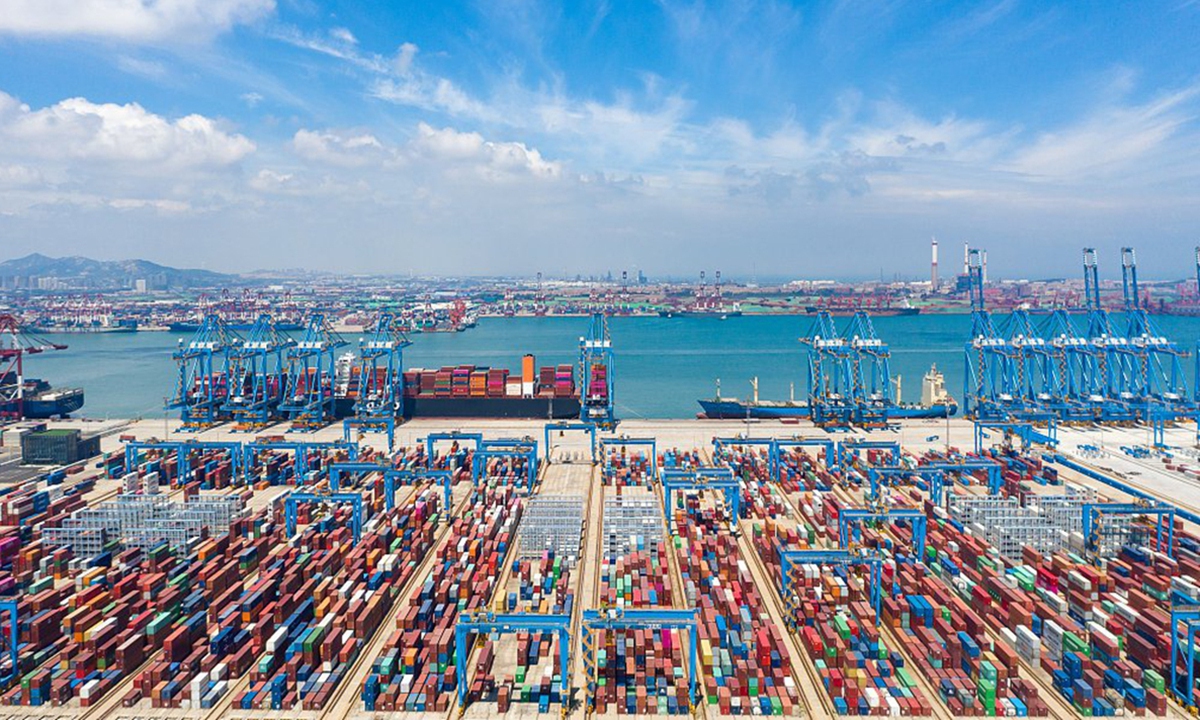
Photo: VCG
China's gross domestic product (GDP) reached around 61.68 trillion yuan (about $8.65 trillion), and grew 5 percent year on year in the first half of 2024, data from the National Bureau of Statistics showed Monday. In the second quarter, the country's GDP expanded by 4.7 percent year on year. These achievements are in line with the annual growth target of "5 percent" for the year, and are broadly consistent with the International Monetary Fund's expectation of 5 percent growth for China this year. It is expected that China's economic growth rate will continue to lead globally in the first half of the year.
With a more uncertain, complex, and severe external environment and new challenges from deepening structural adjustment domestically, the growth was "hard-won," fully demonstrating the strong resilience and great potential and vitality of the Chinese economy, while the fundamentals of its long-term sound growth remain unchanged. The Chinese economy is still a key engine for global growth and stability. In the global context, it is expected that China's economic growth rate in the first half of the year will still be faster than that of major economies such as the US, the Eurozone, and Japan. The keyword "stable" is prominent in the economic data for the first half of the year. China has stabilized growth, prices, and imports and exports, playing a stabilizing role in the turbulent global economy.
Another key word in the first half of the year's economic data is "progress," which refers to structural adjustment, transformation of development modes, improvement of quality, and enhancement of efficiency. The highlight of the first half of the year's economy is the transformation of industries toward "new" and "green": investment in high-tech industries grew fast, intelligent and green new products performed well, new consumption models continued to emerge, energy consumption per unit of GDP continued to decrease, and the resilience of energy security and industrial supply chains was enhanced. China's industrial upgrading and high-quality development are proceeding in an orderly manner. Some achievements are not directly reflected in GDP data, and some investments are yet to yield profits and returns, but they contribute to improving the "quality" and sustainability of China's economic development, enhancing the resilience of economic risk prevention, and these are important indicators behind the GDP.
The highlight of the economic data in the first half of the year is, to a certain extent, due to the precise efforts of policies. Whether it is the proactive measures of fiscal policy, such as tax cuts and increased public spending, or the flexible and moderate monetary policy, such as multiple reserve requirement ratio cuts and targeted support for small and micro enterprises, they have effectively promoted the stable recovery of the economy. In addition, the increase in support for key areas and weak links, the promotion of equipment renewal, and the exchange of old for new consumer goods not only directly stimulate demand, but also accumulate momentum for long-term development. Whether it is China's economic development or economic policies, they are filled with a long-term vision and a commitment to practice.
The Chinese economy is at a critical moment of transformation and upgrading, and determination is particularly required to eliminate any external interference. Interestingly, as China focuses on high-quality development, Western public opinion has been fixated solely on GDP when assessing the Chinese economy. Some Western media outlets have made a big deal about the slowdown in China's GDP growth in the second quarter, echoing the rise of trade protectionism and anti-globalization, attempting to deny China's latest achievements and suppress the positive momentum of China's economic transformation and upgrading. To some extent, in the first half of this year, the US' imposition of 100 percent tariffs on Chinese-made electric vehicles is actually the best proof of China's international competitiveness in the "new track" industry.
Commenting on the economic performance in the second quarter, the spokesperson of the National Bureau of Statistics said that the ups and downs in the economy may have formed the shape of a curving wave, but the underlying trend remains positive. This assessment is fair and objective. China's economy has entered a critical stage once again, and we are fully aware of the difficulties and challenges ahead. Since the beginning of this year, global economic growth momentum has been weak, inflation has been sticky, and issues such as geopolitical conflicts and international trade frictions have been frequent. The external environment facing China's development remains challenging. Domestically, there are also increasing challenges in economic operation, with the problem of insufficient effective demand being particularly prominent, and the domestic circulation not smooth enough. However, the fundamentals underpinning a stable Chinese economy have not changed, the momentum of high-quality development has not changed, and the positive factors driving economic transformation, upgrading, and high-quality development continue to accumulate.
China, as the world's second largest economy, has established a solid foundation for long-term development and continues to strengthen the internal driving force for sustainable economic growth. The Third Plenary Session of the 20th Communist Party of China Central Committee is currently being held to plan for further comprehensive deepening of reforms. The institutional dividends of China's economic growth will continue to be released, and its growth potential will be continuously stimulated. We are confident in the future of the Chinese economy, and our perspective on the Chinese economy should also be more forward-looking.



